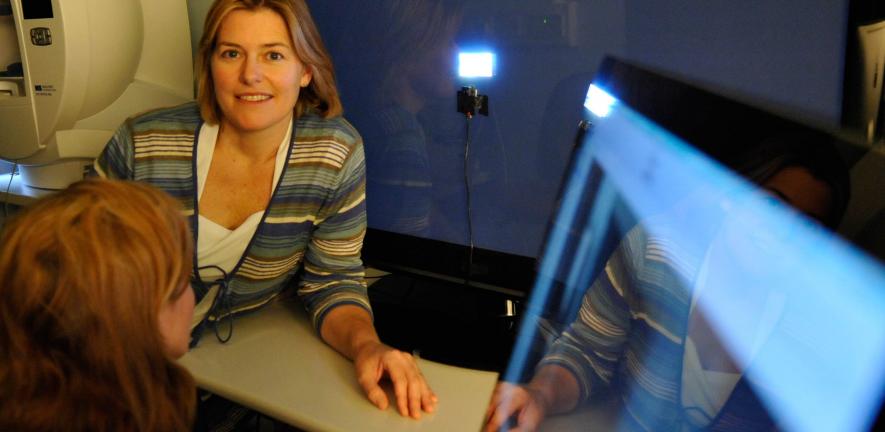
Technology developed at the University of Cambridge to detect peripheral visual field loss in young children will enable the earlier detection of brain tumours, potentially saving sight and lives.
Technology developed at the University of Cambridge to detect peripheral visual field loss in young children will enable the earlier detection of brain tumours, potentially saving sight and lives.
KidzEyez is the first perimeter specifically designed for young children.
Louise Allen
Dr Louise Allen, a paediatric ophthalmologist at the University of Cambridge, and Dr Adar Pelah, an electronics engineer at the University of York, have developed a specialised visual field test system to detect peripheral vision defects, called KidzEyez.
Peripheral visual field loss in children can result from prematurity, eye disorders such as retinal dystrophy, brain conditions such as cerebral palsy, neurosurgery, drug therapy, or brain tumours.
Most children with brain tumours will develop visual field loss due to the tumour’s interference with the visual pathway, which stretches from the optic nerve at the very front of the brain to the visual cortex at the back of the brain. Unfortunately, visual field loss in young children is currently very difficult to assess; timely recognition could lead to earlier diagnosis and treatment of its cause, resulting in the prevention of severe visual impairment, improved outcomes and more individualised support.
Current techniques for measuring the peripheral visual field require the subject to sit still and maintain a steady gaze at a light target for as long as ten minutes. These tests can be difficult enough for an adult to perform, let alone a young child.
The clinical need for a perimeter suitable for use in young children led Dr Allen and Dr Pelah to develop a system which is child-friendly, fast, but accurate in detecting peripheral visual field loss.
Using the KidzEyez system, the child watches a central cartoon on a video screen, while their natural looking response to a target appearing in different locations of the visual periphery is monitored remotely using a small camera located on the video screen. If the target falls within the intact visual field, the child will reflexively look at the target; if the target falls within a blind area, no response will be seen.
“KidzEyez is the first perimeter specifically designed for young children,” said Dr Allen. “Children find the testing fun and, by improving our detection and management of visual pathway tumours, KidzEyez could play a major role in preserving sight and improving our support of children with visual impairment.”
A trial of the KidzEyez perimeter at Addenbrooke’s Hospital, Cambridge has recently been completed on 74 children between three and 10 years of age, some with and some without predicted visual field loss. The results were compared with currently available confrontation testing, which involves the examination of the child’s response to a small toy held in their visual periphery. KidzEyez was found to have 100% sensitivity and specificity compared to confrontation testing but, importantly, gave an interpretable result in more than 70% of children whose concentration was too poor for confrontation testing.
Dr Allen will present the findings of the study at the conference of the British Isles Paediatric Ophthalmology and Strabismus Association this week in London.
KidzEyez has been funded by Cambridge Enterprise, the University’s commercialisation group, and the University of York. Cambridge Enterprise is currently seeking commercial partners for licensing, collaboration and development of this technology.
This work is licensed under a Creative Commons Licence. If you use this content on your site please link back to this page.





